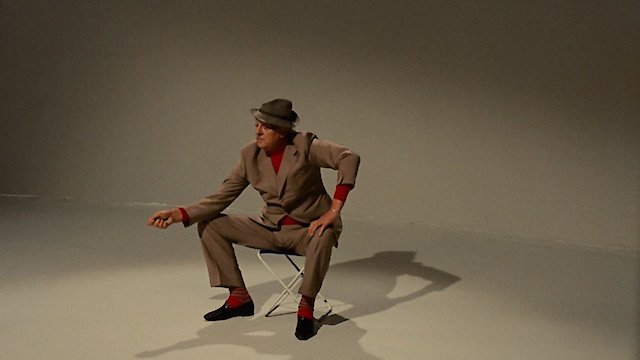
Parade
Where to Watch Parade

Parade is a highly distinctive 1974 Swedish-French comedy film directed by and starring Jacques Tati. While the film is often overshadowed by Tati's other celebrated works like Mon Oncle and Playtime, it is nevertheless a compelling piece of cinema that offers a surprising mix of live performance and filmmaking.
In Parade, Tati invites us to experience a captivating and uniquely playful spectacle. The title resonates in two ways: the literal aspect, denoting a convoy or procession, and the metaphorical, representing a presentation or exhibition of skills. It is a celebration, a spectacle, and a showcase of talent.
A significant divergence from Tati's previous films, Parade has no linear plotline, and breaks free from traditional narrative norms. Instead, Tati presents us with a series of interconnected aesthetic sequences that together form a vibrant representation of performance art linked by the theme of a circus parade. Each scene plays out like a visual poem, inviting audiences to engage with the film in a more abstract and sensory way.
Jacques Tati stars as the ringmaster of this cinematic circus, orchestrating a vivid array of skilled performers that include jugglers, magicians, clowns, musicians, and acrobats. His iconic presence in the center imbues the film with a comforting familiarity, a tether to reality amidst the spectacle.
Parade also involves a couple of other performers, notably Karl Kossmayer and Pierre Bramma. Acting alongside the man known for his portrayal of the iconic Monsieur Hulot, they manage to win the audience over with their endearing performances and unique artistic talents. Kossmayer, a phenomenally adept juggler and Bramma, an elegant acrobat, contribute generously to the festive allure of the performance.
The spectators, seen mostly in silhouette, become a critical part of the action, symbolizing the interactive essence of performance art which, at its core, relies on the connection between the performers and the audience. The film utilizes the audience as an integral component of the narrative, transforming the act of viewing into an inclusive, shared experience.
Throughout Parade, elaborately designed sets shift and change to accommodate each new act, serving as the backdrop to a variety of performances that traverse the global scale. From Swedish folk dances to Spanish flamenco, American jazz to traditional French mime, Parade encompasses a vast array of multicultural performances, hence manifesting a parade of worldwide cultures.
There are many elements in Parade that hark back to Tati's earlier works, primarily his fascination with modernity. Tati uses the film to highlight some of his enduring themes - the tension between tradition and progress, the impersonality of modern life, and the joy of simple, everyday moments. Yet, underpinning these thematic continuities is a departure from his earlier style. Parade emphasizes the aura of a live performance rather than the scripted actions of a film.
One of the film’s unique features is its innovative use of sound. Sound effects play a critical role in Parade, accentuating the comedy and adding another dimension to the visual spectacle. They heighten the absurdity of certain scenes, amplify the humor in others, and emphasize the magical realism characteristic.
Parade is shot in both color and black and white, a stylistic choice that allows for interesting visual contrasts and spotlights the artifice of performance. Noticeable is the lack of dialogue throughout the film, further reinforcing Parade’s reliance on visual and aural cues to narrate its story.
Despite its lack of traditional plot, Parade reflects the influence of silent cinema, early comedy, and vaudeville on Tati’s artistic style, showcasing his commitment to a vintage cinematic tradition grounded in visual gags and physical comedy. There's something quite nostalgic about the presentation, a reflection on the charm and simplicity of traditional performances that seem to be fading away in the face of fast-advancing modernity.
In conclusion, Parade is a fascinating project that combines elements of cinema, live performance, and modern art. A lesser-known cinematic gem and the last feature-length film of Jacques Tati, Parade offers a unique, experimental lens to appreciate performance artistry woven through a lens of cinematic craft. The film may confound those expecting a traditional narrative, but for viewers with the appetite for something different, Parade promises to be a treat.
Parade is a TV Movie, Comedy movie released in 1974. It has a runtime of 89 Critics and viewers have rated it moderate reviews, with an IMDb score of 6.0..
How to Watch Parade
Where can I stream Parade movie online? Parade is available to watch and stream, buy on demand, download at Prime Video, Apple TV Store, Amazon, Fandango at Home. Some platforms allow you to rent Parade for a limited time or purchase the movie for downloading.
